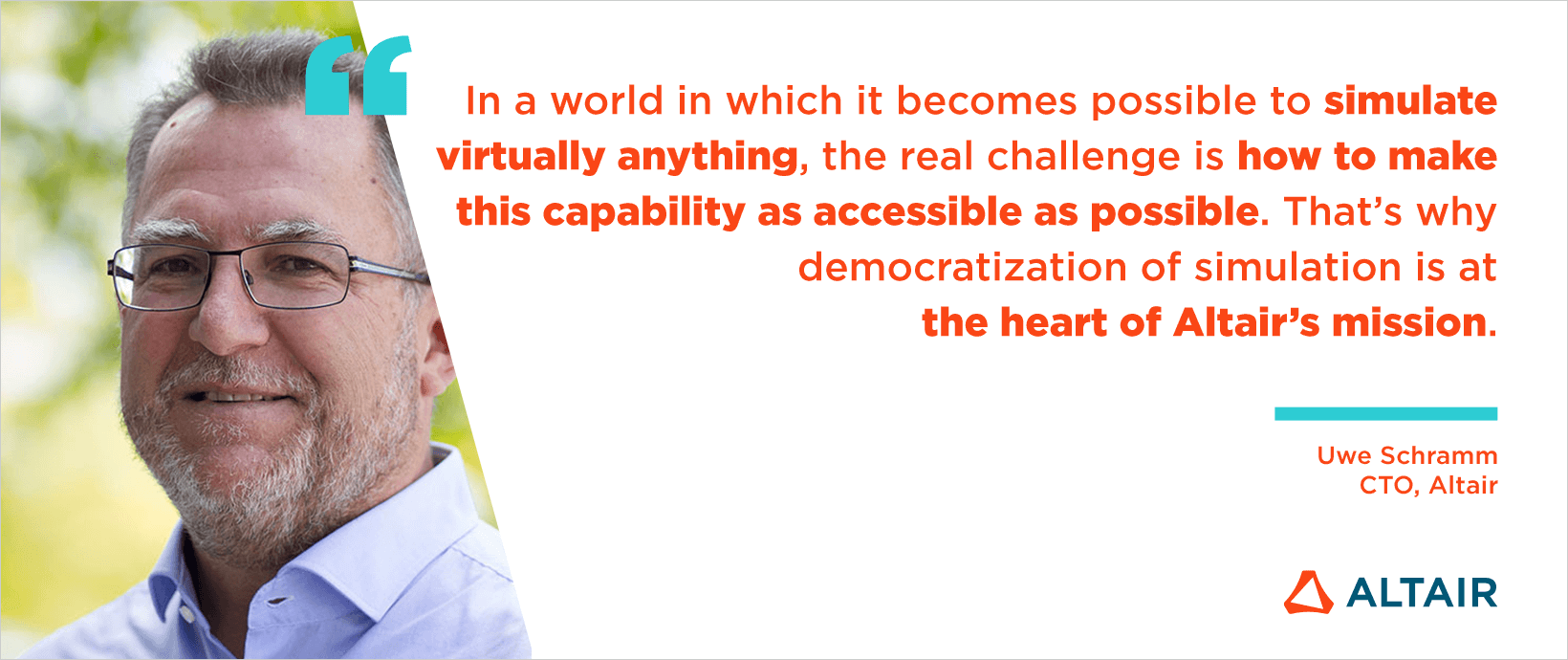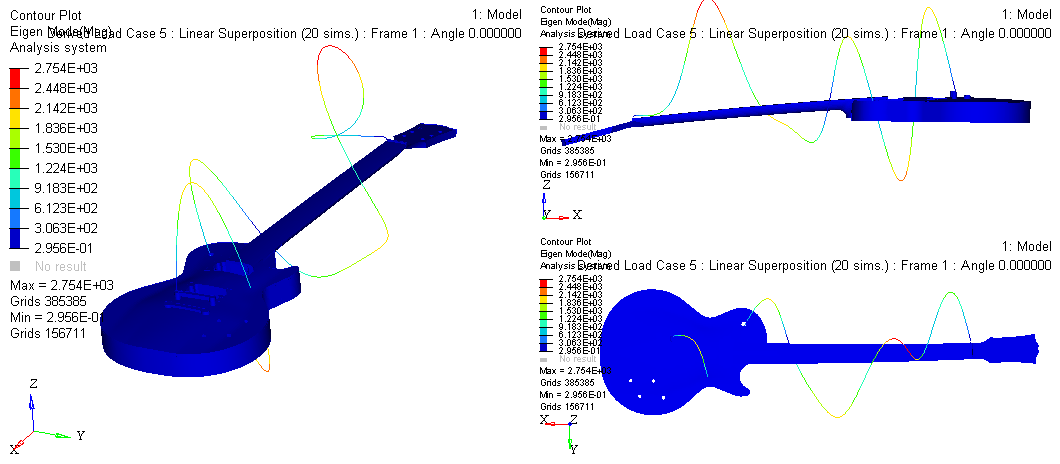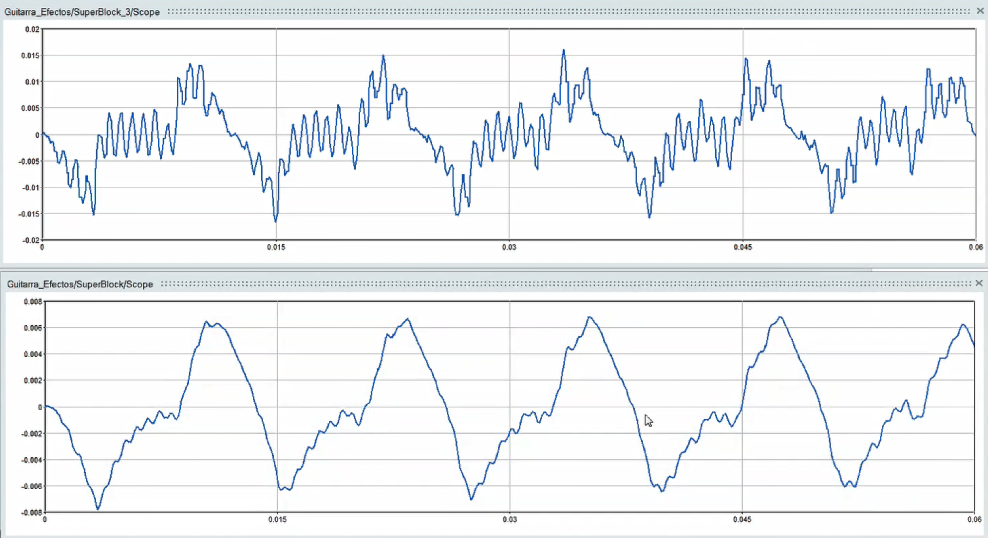Multi-Disciplinary Simulation Rocks

Apparently, lockdown has sparked a boom in guitar sales. Confined to our homes, many of us have discovered, or re-discovered, the pleasure of picking an acoustic, thrashing a Stratocaster, or strumming a ukulele. As a guitar player, I understand the appeal. I’ll leave it to you to guess which of those three categories I fall into.
This fresh wave of enthusiasm for the guitar recalls an interesting project that some of our talented colleagues in Mexico were involved with a couple of years back. Altairians Victor Cook, Matías Barrón, and other colleagues set themselves the challenge of simulating an electric guitar, primarily using Altair HyperWorks™. Specifically, they wanted to play the iconic riff from Cream’s “Sunshine of Your Love,” not just as a numerical output, but also as an authentic sound.
Although it seems like a bit of fun (assuming tricky simulation projects are your thing), the real aim was to tell a bigger story. Namely, the extent to which simulation has become a truly multi-disciplinary process.
A few years ago, simulation of different elements of a complex design would typically be performed by different people. Integrating the results could be a code-heavy, time-consuming task. Today, Altair’s comprehensive ecosystem of tools enables multi-disciplinary simulation to be performed seamlessly and efficiently by just one person. To be clear, we don’t have an electric guitar workflow out-of-the-box in HyperWorks, but there is enough versatility to put your own in place should you need one.
The guitar project illustrates this beautifully. Representing an unusual mix of structural mechanics and electromagnetics, it certainly provided our intrepid team with some interesting issues to resolve.
This is a linear superposition of the first 20 modes of an electric guitar obtained running a normal modes analysis in Altair OptiStruct. These harmonics, as they’re called in music, are what give electric guitars or pianos their distinctive sound, even while playing the same tone.
In broad terms, a finite element model of a guitar was created and analyzed. They tuned it, plucked it, and, plugged it into a real amplifier. Finally, the results were post-processed as an audio signal to recreate a series of effects pedals.
Altair HyperMesh™ and Altair OptiStruct™ were used for the overall shape of the guitar and string. Altair HyperStudy™ enabled the experimentation with string tension necessary to tune it. OptiStruct and Altair Flux™ were employed to simulate the electromagnetic pickup that converts the string’s motion energy into electrical energy – calculating the voltage output of the coil caused by disturbances in the magnetic field.
 Using the Mode Tracking feature in Altair HyperStudy, it was possible to tune all six strings of the guitar in a single optimization process. Guitarists are not so lucky and would normally have to go through each, one at a time, at least for a couple of rounds.
Using the Mode Tracking feature in Altair HyperStudy, it was possible to tune all six strings of the guitar in a single optimization process. Guitarists are not so lucky and would normally have to go through each, one at a time, at least for a couple of rounds.
To produce natural-sounding results, time steps for the analyses had to be minuscule; sampling rates were in the region of 10,000 results per second. Digital audio was obtained after processing the voltage signal from Flux with an open-source sound compiler. Finally, Altair Activate™ was used to produce a few common guitar effects, such as overdrive. Then it was simply a case of connecting the PC to an amplifier. Listen here.
Such a brief summary doesn’t do justice to either the complexity of the project or success of the outcome. A wide range of variables affect the sound of a guitar. However, the more physics the team put into their model, the closer they got to their target. And one of the advantages of generating audio is that the results were accessible to everyone, not just those with sufficient know-how to make sense of the numbers. While professional musicians don’t need to fear for their jobs just yet, it’s a highly credible recreation of the electric guitar sound.
Once the tuned string is plucked in Altair OptiStruct, the resulting displacements are imposed on a nickel string segment in Altair Flux. Admittedly, string height in this animation is a little low, but makes the point for properly adjusting the action of the guitar low enough to have a robust output, and not too low that the string is pulled by the magnet, causing intonation issues.
In a world in which it becomes possible to simulate virtually anything, the real challenge is how to make this capability as accessible as possible. That’s why democratization of simulation is at the heart of Altair’s mission. Which is great news for anyone with an interest in reaching better design outcomes, faster. But as far as becoming the next Hendrix or Dylan is concerned, I’m afraid Bryan Adams was right. There’s still no substitute for practicing till your fingers bleed.
You can check out the final simulated sound plugged into a real amplifier here.
Effects such as low-pass filters were not difficult to emulate in the signal path using Altair Activate.







